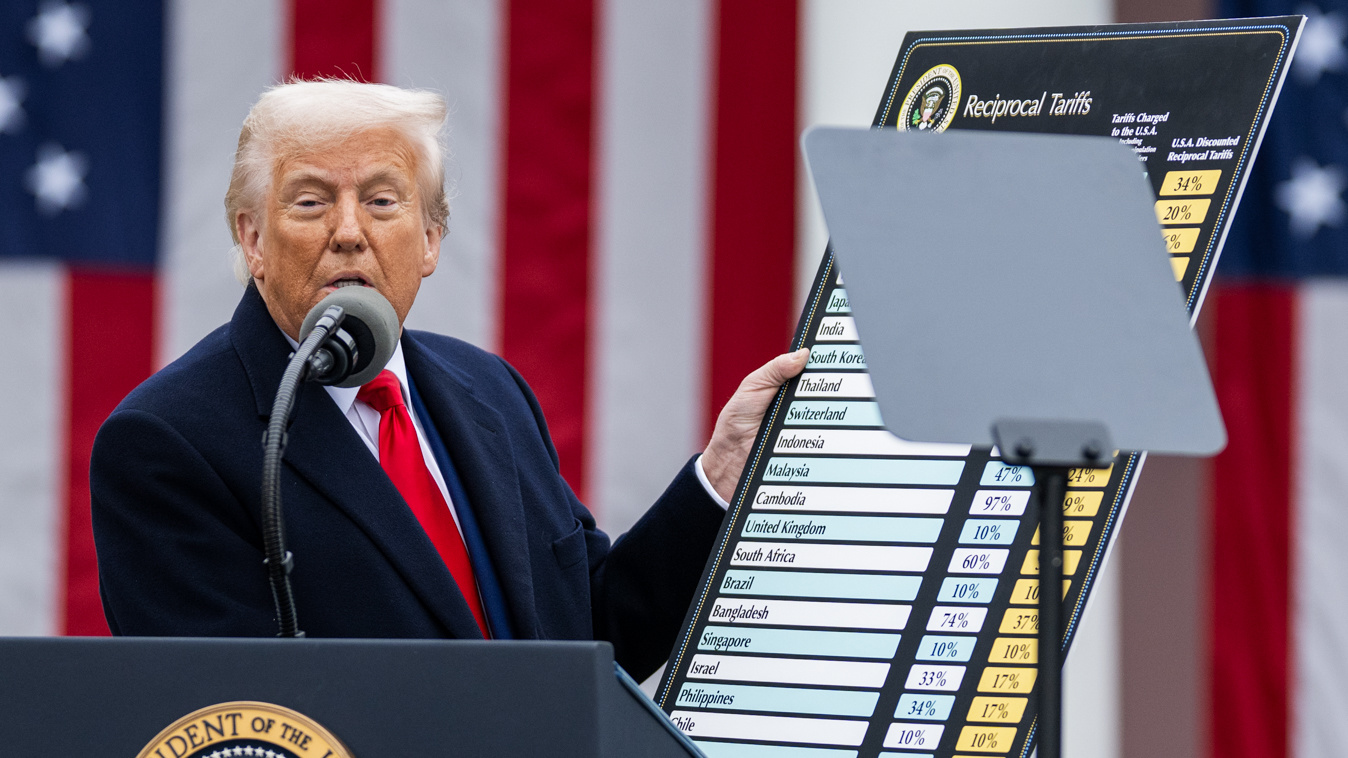By Jeff Ferry, CPA Research Director
Summary: This article looks at China’s heavy dependence on – or overexposure to – the US for their trade surplus and their exports. It examines different ways of counting the China trade surplus, finding that on one alternative measure it could be as much as twice as large as China’s own published reports. Finally, reasons for the disparities in different trade data reports are examined.
The struggle to reduce America’s trade deficit with China is still in its beginnings, but the early signs are that America may be winning the battle. The Chinese stock market is down far more than the US stock market so far this year, and US companies are reporting generally strong second quarters. Meanwhile, China is flooding its capital markets with liquidity and depreciating its currency to keep its exports moving, and has stopped talking about tariff retaliation, at least for the moment. The Chinese government stopped publishing monthly trade figures in March without explanation, possibly a sign that Beijing does not want the world to see how its exports are suffering.
China’s problem, as veteran China-watcher and member of Congress’s US-China Commission Mike Wessel recently explained to a newspaper, is that China is “overexposed to the US market.” The pressure the US is putting on China now, Wessel said, is more likely to achieve results than it would in the future, when China is likely to have a more diversified economy.
Just how overexposed is the Chinese economy? We took a look at the detailed trade data to find the answer. But it turns out the answer is not simple.
As China is the only source for data on its own total trade surplus, we began by using the Chinese trade data. (All figures refer to goods trade only.) These data show extraordinary overexposure, or over-dependence, on the US market. Looking at the years from 2000 to 2016, we find that China’s surplus with the US accounted for an average of 107% of the total China trade surplus over these 17 years! In other words, without US trade, China would have been in deficit over the average of these 17 years. For the first six years of the century, China’s bilateral surplus with the US was greater than China’s total trade surplus. As recently as 2011, China’s bilateral surplus with the US was $202 billion, while its global trade surplus was only $155 billion. In other words, in 2011 if the US had disappeared off the face of the earth, China would have been running a trade deficit! This suggests that alongside Deng Xiaoping and Xi Jinping, the United States deserves its own plaque in the Great Hall of the People as the Great Enabler of China’s economic rise. Only US willingness to dismantle its own domestic industries and import from China has made it possible for China to achieve its rapid rise to the world’s number two economic power.
In 2016, the US still accounted for 49% of China’s total trade surplus. (See Table 1). No other nation is even close. India, at 9.1% is second and the UK at 7.3% is in third place.
The trade surplus is important because it is essentially a measure of over-saving and underconsumption. A persistent surplus like China’s is an example of what used to be called “beggar-my-neighbor” policies—because it allows the surplus nation to build up its industry and employment at the expense of persistent deficit nations.
Another way to measure the over-dependence of China’s economy on the US is to look at Chinese exports. On this measure, US overexposure is still striking, although the actual figure is smaller, at 18.4%. The next two largest buyers of Chinese exports are Japan and South Korea, although with both of these nations China actually runs a bilateral deficit, illustrating the strength of the manufacturing sectors in both of the smaller nations as well as the tightly linked supply chains that stretch across East Asia.


Trade with China: China Data vs. Other Nation Data
Readers may be aware that there is a huge difference between China’s data and US Census Bureau data on the US-China trade balance. In 2017 for example, China’s figure for the bilateral US surplus was $275.8 billion, while the US figure for the same bilateral trade (a deficit from our perspective) was 36% higher at $375.6 billion. The US does not collect data on all of China’s trade, only its trade with the US. To find another way to look at China’s total trade, we used the United Nations’ ComTrade database, which collects data from its nearly 200 member nations. By adding up what each nation reports for trade with China, we can reach an independent total and breakdown for China’s trade balance.
For this dataset, we can carry the results through to 2017 and results for the US are not that different. The US still accounts for the lion’s share of China’s trade surplus. Figure 3 shows that in 2017, the US accounted for the majority of China’s surplus on both measures.

Figure 3: Data from China shows its US trade surplus was well over 100% of its total trade surplus early in the 2000s and has now settled at 50%-65% of the total. Other nations’ data shows a more consistent 40%-55% trend throughout the period. This consistency may suggest other nations’ data is more accurate.
Can We Trust Beijing’s Trade Data?
Based on other nations’ data, the US share of the surplus tends to be lower, reflecting the fact that China’s trade surpluses are higher in the aggregated other nation data. In fact the discrepancy between the two ways of calculating China’s global trade surplus is huge. China’s trade surplus was on average 400% higher—or five times the level of China’s own figures between 2000 and 2017. In Figure 4, we compare the global trade surplus. According to data from China’s trading counter-parties, China’s trade surplus actually topped $1 trillion in 2014 and 2015 before coming back down to the still-huge level of $720 billion last year. In Figure 5, we list China’s top ten trading relationships and contrast reports of their trade balance with China with Beijing’s published data. This data is for 2016, the latest year for which we have comparable figures.

Figure 4: Was China’s 2017 trade surplus $428 billion, as it claims, or $720 billion, as data from over 100 other nations suggest? Aggregated data from other nations on China’s global trade surplus runs some 50%-100% higher than China’s own published figures in recent years. It’s unclear which data is more accurate.

Figure 5: Comparison of China’s 2016 data with Counter-party data shows wide disparities for most of China’s major trading counter-parties. China claims to be running deficits with Japan, Germany, Malaysia, and Thailand, but those nations all reported China ran a surplus with them. Aggregated counter-party data produced a trade surplus 79% higher than China’s official report. All data is in billions of dollars and for 2016. Sources: China Customs and UN ComTrade.
Could China really have run a trade surplus of over $1 trillion? This would have been some 10% of their GDP and seems eminently possible. Whose figures are correct, China’s own data or the data of their counter-parties? The UN data contain some anomalies that need to be examined further. It is beyond the scope of this paper to make a judgment. There are at least three possible explanations for the disparity:
- First, these could simply be common statistical disparities. UN ComTrade’s statistics team has a long list of sources of disparities in the data including the fact that some countries add freight costs to the value of imports and some don’t. We took a quick look at some other nations’ trade totals and the totals reached tallying up counter-party data. We found an even larger disparity in Mexico’s trade figures—and as an example the US Census states that the US had a deficit of $74 billion with Mexico last year, while Mexico’s data says the bilateral deficit was $132 billion.
- Another possible explanation is that the China data is intentionally understated. It’s quite possible that China is deliberately cooking the books. Many economists openly distrust China’s GDP statistics. It seems plausible that back in the 1990s, when China was first implementing its plan for neo-mercantilist export-led growth, government officials decided that reducing the published trade surplus figures could help minimize potential international resistance.
- A third possible explanation comes to us from Michael Pettis, an American-born professor at Beijing University and a student of the Chinese financial system. He suggests that Chinese businessmen use “creative” trade accounting as a means of avoiding China’s capital controls and moving capital out of China. For example, a businessman could report to the Chinese government that he is exporting an order for shoes worth $10 million to the US via Hong Kong. Once in Hong Kong, his local subsidiary will bill the American customer $15 million for the order. The $10M payment goes back to China but the $5M stays in his Hong Kong bank account. In China’s government accounts, that is an export worth $10M. But in US accounts, that is an import worth $15M.
In conclusion, trade data are contradictory and may be unreliable. But the fundamental message of all the data is that the US is not only the world’s number one consumer and importer, but China’s number one customer. That makes China more dependent on us than we are on them.












